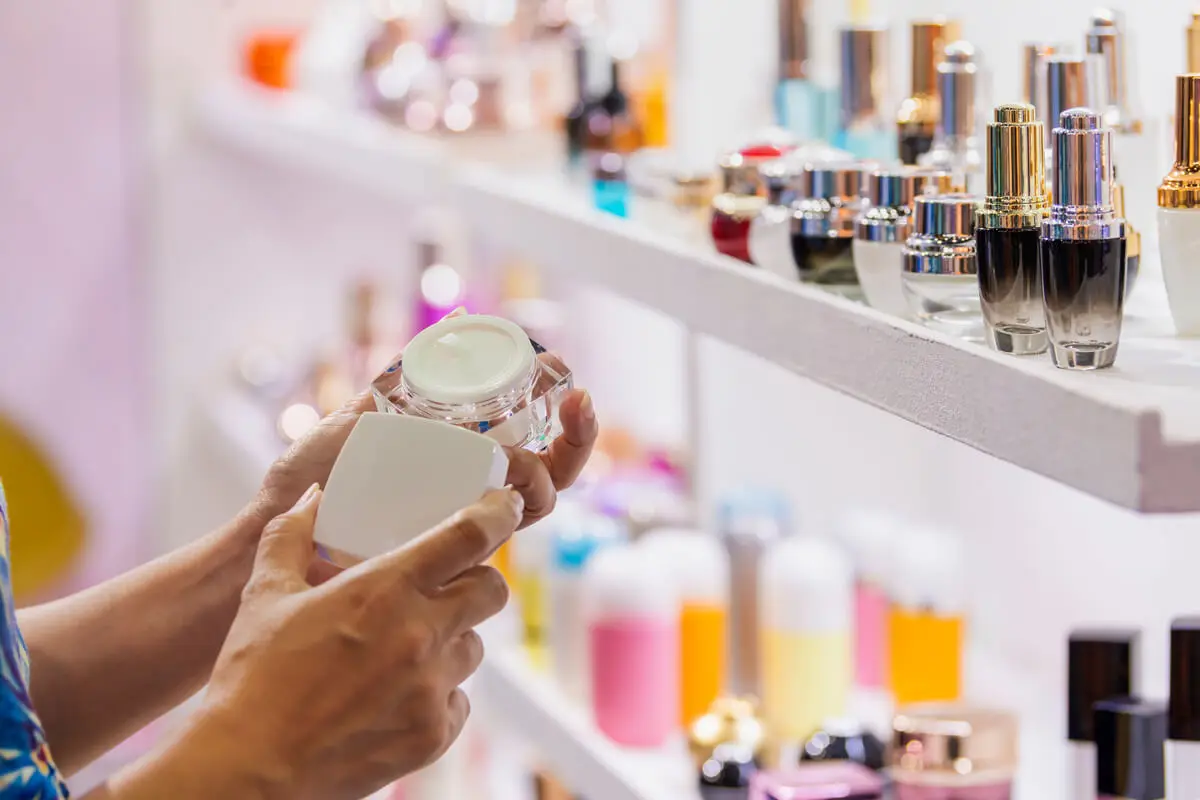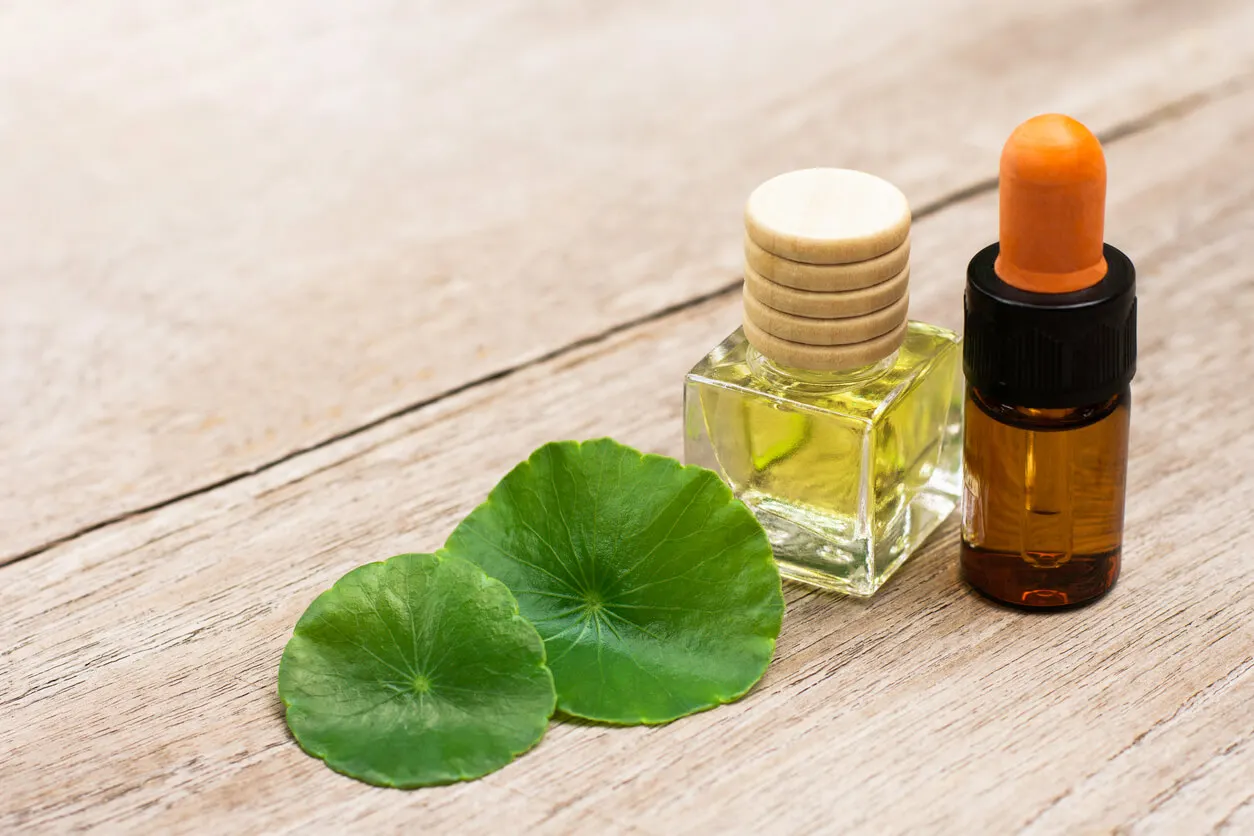Flooded Skin: Dermatitis Due to Excessive Cosmetics


Reviewed and approved by the nurse Leidy Mora Molina
The skin is good at sending signs about its needs and anything that isn’t good for it. One of the most prevalent ways it communicates is through flooded skin. This refers to certain conditions that seem to overwhelm skin health due to the excessive use of cosmetics.
It’s possible to use substances that, instead of correcting conditions, exceed the resistance of the epidermis. The consequence is that the ingredients prove to be ineffective and dermatological problems appear that demand medical attention.
Caution with the doses of cosmetic active ingredients and knowledge about what you’re using on your face are essential points to minimize the risk of flooded skin. We’ll show you how to detect the symptoms of this condition along with methods to alleviate it.
What is flooded skin?
Flooded skin is a consequence of overexposure to certain active ingredients contained in the products you use for facial care. The signs appear some time after the active ingredients have been applied. However, in some cases, the effects of flooded skin are visible immediately, when the person uses a new cosmetic for the first time.
The symptoms have to do with redness, flaking, acne, or a noticeable greasy appearance on the face. It doesn’t mean that the formula is harmful, but rather that the person’s skin is particularly sensitive to strong compositions that don’t affect most other people.
Basically, skin flooding encompasses two characteristics:
- Cosmetic dermatitis-type reactions from the excessive use of cosmetics.
- Elevated sebum production, also due to cosmetics, but this time from using cosmetics that are unsuitable for that particular skin type.

Classification of flooded skin
Flooded skin has to do with the application of active ingredients that are unsuitable for the skin. It’s also linked to an overabundance of nutrients and oils. From there, this effect comprises 2 classifications, as we have already mentioned.
1. Dermatitis
The irritative form of flooded skin is caused by the use of exfoliants with alpha or beta hydroxy acids that alter the pH and the skin barrier. Hypersensitivity results in excessive oil production and acne, because the skin goes out of control in search of balance.
Similarly, irritative contact dermatitis can occur, according to the properties of the irritant product and the characteristics of the exposure to it. For example, there are reviews of reactions caused by the mercury content of some cosmetics.
2. Oily skin
This condition can occur in acne-prone skins, congested by active components that they don’t need. These skins are overhydrated and end up with inflammatory processes and pores full of oil, increasing the danger of attracting bacteria and generating outbreaks.
If the acne is mild, a topical treatment is suggested that includes cleansing with neutral soap and not bursting the comedones. Likewise, the application of retinoids, peroxide or salicylic acid, as ordered by the dermatologist, is good. When it’s severe, the doctor may resort to oral systemic treatments.
We invite you to read: Day and Night Creams: What Are Their Differences?
How to treat flooded skin?
You shouldn’t try to solve a case of flooded skin on your own. Medical assistance will always be the best course of action, especially when the symptoms don’t go away.
When skin reactions to a cosmetic product are detected, discontinue the treatment and consult a specialist. The dermatologist will specify whether the doses should be regulated or whether it’s best to choose another product. Whatever the case, it’s essential to know the type of skin in order to know which formulation is suitable for it.
Niacinamide is generally prescribed to alleviate irritated skin, or salicylic and glycolic acids if the reaction corresponds to a saturation. In addition to this, the following tips are helpful in relieving flooded skin.
Antioxidant masks
Most preparations with natural ingredients provide antioxidant, restorative and moisturizing effects. Which ones are useful?
- Aloe vera: This works as an emollient, anti-inflammatory and healing cream. It can be used in cases of dry eczema, irritations, acne and other skin disorders.
- Tea tree: If the diagnosis is mild acne, then tea tree is likely to aid in recovery. Research on the plant shows that preparations with 10% of its essential oil are effective against infections, furunculosis, dermatitis, and acne.
- Centella asiatica: An article published by Frontiers in Pharmacology highlights the properties of this herb. It’s effective against inflammation, fights oxidative stress and intervenes in skin improvement. It’s also effective in healing, healing burns, and increasing collagen synthesis, adds the publication Advances in Dermatology and Allergology.

Thermal waters
Cosmetic thermal waters are recommended to restore damaged skin, bringing it back into balance. They have the ability to regenerate, soften and moisturize from their mineral composition.
Prescribed facial hygiene
Facial hygiene guided by dermatologists contributes to the revitalization of the skin barrier. Similar to the steps of ordinary beauty rituals, it’s necessary to comply with deep cleansing, exfoliation, moisturizing and photoprotection, but all according to medical prescription. This is the only way to achieve a healthy dermis, essential to fulfill the following purposes emphasized by experts:
- Its function as a barrier organ
- In immune defense
- Vitamin D activation
- Temperature regulation
- As a sensitive and aesthetic means of excretion
Find out more: Rocío Gil Redondo’s Tips for Skin Care and Rejuvenation
Can flooded skin be prevented?
The answer is yes. The main thing is to respect the type of skin, providing it with cosmetic active ingredients that respond to its characteristics. Another tip is to incorporate facial products little by little, to test possible side effects and reactions.
Read the application instructions carefully. If you don’t, then you won’t know how often it’s advisable to use them. If in any scenario the skin doesn’t assimilate the treatment or recommendations, then a medical evaluation is necessary to establish the appropriate treatment for the flooded skin.
All cited sources were thoroughly reviewed by our team to ensure their quality, reliability, currency, and validity. The bibliography of this article was considered reliable and of academic or scientific accuracy.
- Acné. Redacción Médica. Diccionario de enfermedades. España. https://www.redaccionmedica.com/recursos-salud/diccionario-enfermedades/acne
- Brzezińska M, Bylka W, Studzińska-Sroka E, Znajdek-Awiżeń. Centella Asiática en Cosmetología. Avances en Dermatología y Cosmetología. Vol. 30. Polonia; 2013. https://www.mendeley.com/catalogue/1e8c0e96-4dd9-3098-b83a-ed1ec7a0a9f0/?utm_source=desktop
- Carretero Acame M, Ortega T. Plantas medicinales y derivados en dermatología (IV): Melaleuca. https://botplusweb.farmaceuticos.com/Documentos/2014/10/29/78523.pdf
- D’Amelio Garófalo C. Dermatitis de contacto. Clínica Universidad de Navarra. España. https://www.cun.es/enfermedades-tratamientos/enfermedades/dermatitis-contacto
- Gao M, Hayashi M, Kudo M, Liu T, Qin L, Sun B, Wu L, Wu Y, Zhang C. Potencial terapéutico de la centella asiática y sus triterpenos: Una revisión. Fronteras Farmacológicas. Suiza; 2020. https://www.mendeley.com/catalogue/cd9f3c48-327e-30e1-8dae-7348cd6f97ff/?utm_source=desktop&utm_medium=1.19.4&utm_campaign=open_catalog&userDocumentId=%7B1e4ba46a-6c55-47e8-92b5-ac03403aa382%7D
- López Luengo MT. Plantas medicinales de aplicación en dermofarmacia. Offarm. Vol. 22. Núm. 11. pp. 122-115. España; 2003. https://www.elsevier.es/es-revista-offarm-4-articulo-plantas-medicinales-aplicacion-dermofarmacia-13055930
- Niacinamida. Medline Plus. Biblioteca Nacional de Medicina. Estados Unidos; 2022. https://medlineplus.gov/spanish/druginfo/natural/1534.html
- Piquero-Casals, Jaime, et al. “Topical non-pharmacological treatment for facial seborrheic dermatitis.” Dermatology and therapy 9.3 (2019): 469-477.
- Sandoval B. Aplicaciones de los hidroxiácidos en dermatología cosmética. Folia Dermatológica Peruana. Vol. 12. Núm. 1. Perú; 2001. https://sisbib.unmsm.edu.pe/bvrevistas/folia/vol12_n1_abril_2001/aplicaciones.htm
- Sun, Sihao, et al. “Irritant contact dermatitis caused by cosmetics containing excessive mercury.” Journal of Cosmetic Dermatology (2022).
- Viera Ramírez A. ¿Cuándo está la piel sana? Fundación Piel Sana. Academia Española de Dermatología y Venereología. https://aedv.fundacionpielsana.es/piel-sana/Cuando-esta-la-piel-sana
- Zirwas, Matthew J. “Contact dermatitis to cosmetics.” Clinical Reviews in Allergy & Immunology 56.1 (2019): 119-128.
This text is provided for informational purposes only and does not replace consultation with a professional. If in doubt, consult your specialist.








